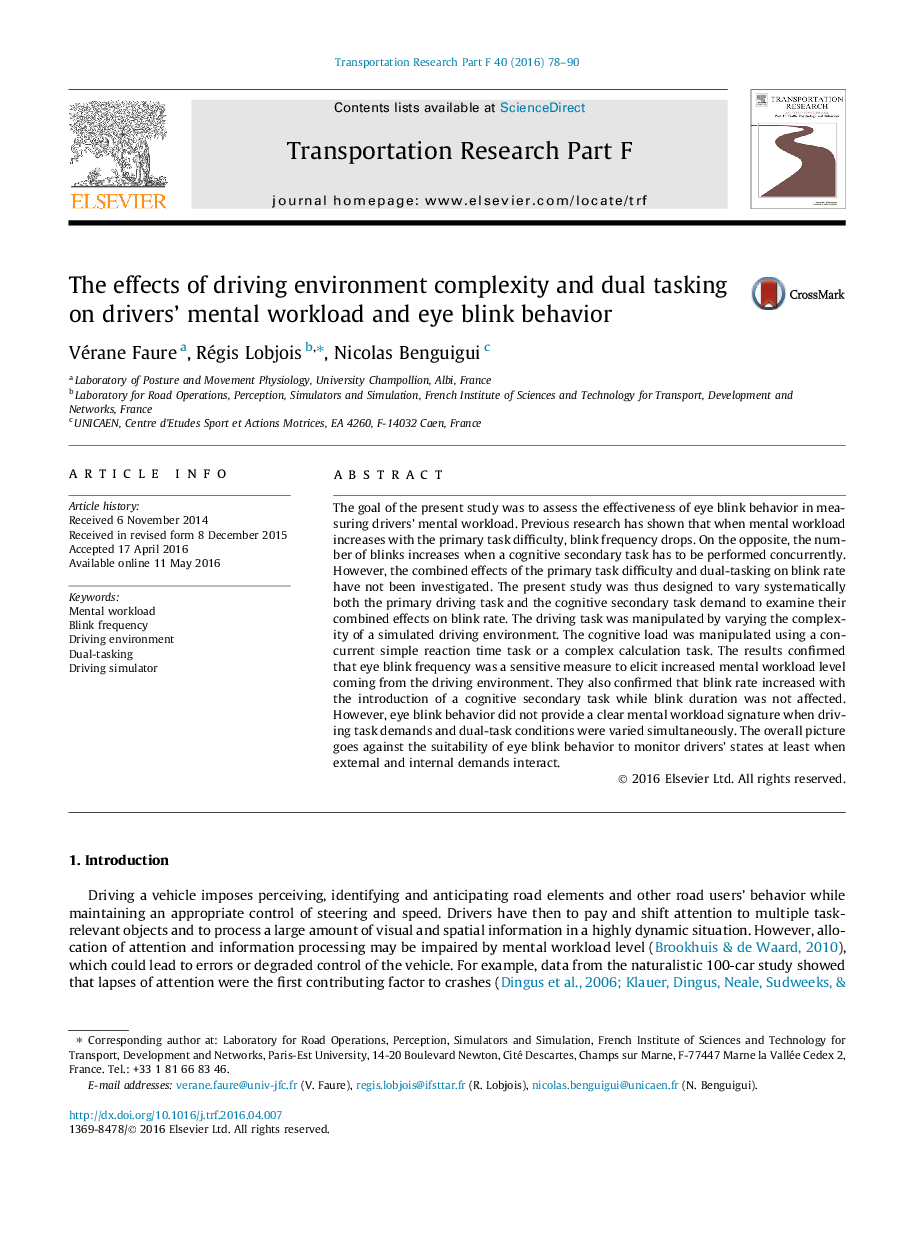| کد مقاله | کد نشریه | سال انتشار | مقاله انگلیسی | نسخه تمام متن |
|---|---|---|---|---|
| 897602 | 1472443 | 2016 | 13 صفحه PDF | دانلود رایگان |
• Blink rate decreased when the complexity of the driving environment increased.
• Blink rate increased when a cognitive secondary task was performed.
• Blink rate failed to disentangle the combined effects of these workload variations.
• Objective and subjective measures of workload did not converge.
The goal of the present study was to assess the effectiveness of eye blink behavior in measuring drivers’ mental workload. Previous research has shown that when mental workload increases with the primary task difficulty, blink frequency drops. On the opposite, the number of blinks increases when a cognitive secondary task has to be performed concurrently. However, the combined effects of the primary task difficulty and dual-tasking on blink rate have not been investigated. The present study was thus designed to vary systematically both the primary driving task and the cognitive secondary task demand to examine their combined effects on blink rate. The driving task was manipulated by varying the complexity of a simulated driving environment. The cognitive load was manipulated using a concurrent simple reaction time task or a complex calculation task. The results confirmed that eye blink frequency was a sensitive measure to elicit increased mental workload level coming from the driving environment. They also confirmed that blink rate increased with the introduction of a cognitive secondary task while blink duration was not affected. However, eye blink behavior did not provide a clear mental workload signature when driving task demands and dual-task conditions were varied simultaneously. The overall picture goes against the suitability of eye blink behavior to monitor drivers’ states at least when external and internal demands interact.
Journal: Transportation Research Part F: Traffic Psychology and Behaviour - Volume 40, July 2016, Pages 78–90
